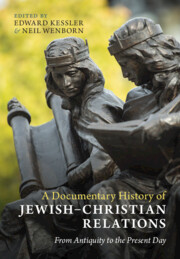Book contents
- Frontmatter
- Dedication
- Contents
- Contributors
- Editors’ Preface
- Acknowledgements
- Abbreviations of Rabbinic Literature and Scripture
- Documents
- Introduction
- Part I To 900 ce
- 1 The New Testament
- 2 Eastern and Western Writings up to the Ninth Century
- 3 Classic Rabbinic Literature up to the Ninth Century
- Appendix to Part I: Exegetical Encounters
- Part II 900 to 1800
- Part III 1800 to the Present Day
- Index of Documents and Sources
- Index of Names and Subjects
- References
3 - Classic Rabbinic Literature up to the Ninth Century
from Part I - To 900 ce
Published online by Cambridge University Press: aN Invalid Date NaN
- Frontmatter
- Dedication
- Contents
- Contributors
- Editors’ Preface
- Acknowledgements
- Abbreviations of Rabbinic Literature and Scripture
- Documents
- Introduction
- Part I To 900 ce
- 1 The New Testament
- 2 Eastern and Western Writings up to the Ninth Century
- 3 Classic Rabbinic Literature up to the Ninth Century
- Appendix to Part I: Exegetical Encounters
- Part II 900 to 1800
- Part III 1800 to the Present Day
- Index of Documents and Sources
- Index of Names and Subjects
- References
Summary
This chapter focuses on the ‘parting of the ways’ between Judaism and Christianity. The documents show how anti-Jewish writings became central to Christian identity but also indicate real encounters between Christians and Jews and a closer relationship than might be anticipated.
- Type
- Chapter
- Information
- A Documentary History of Jewish–Christian RelationsFrom Antiquity to the Present Day, pp. 113 - 160Publisher: Cambridge University PressPrint publication year: 2024

